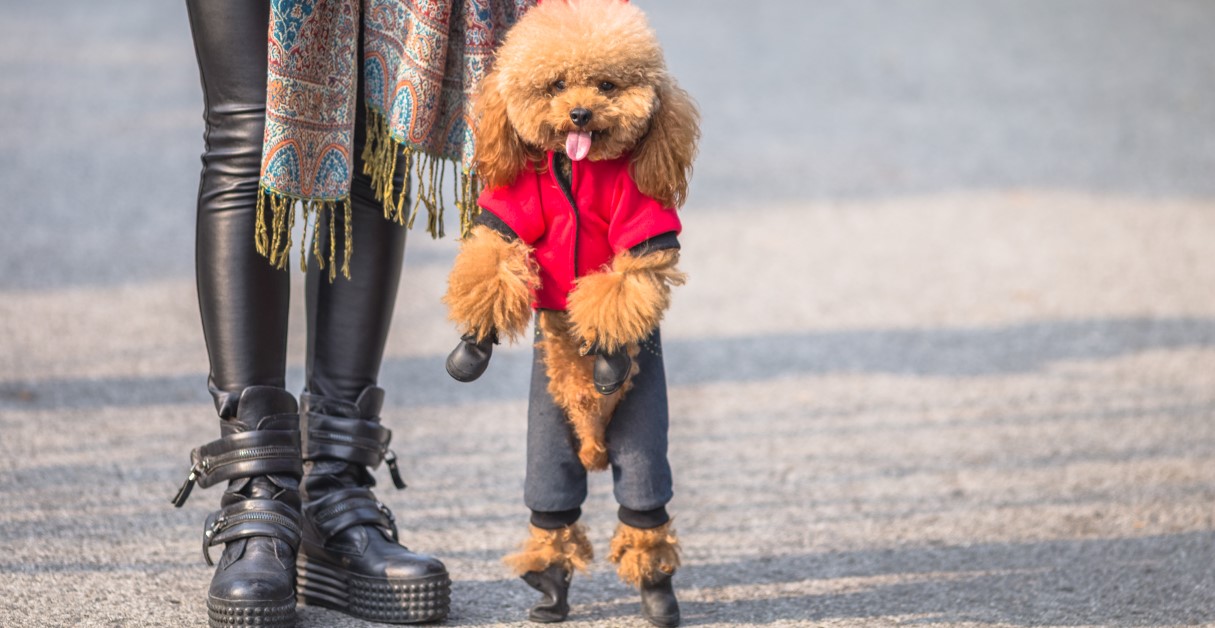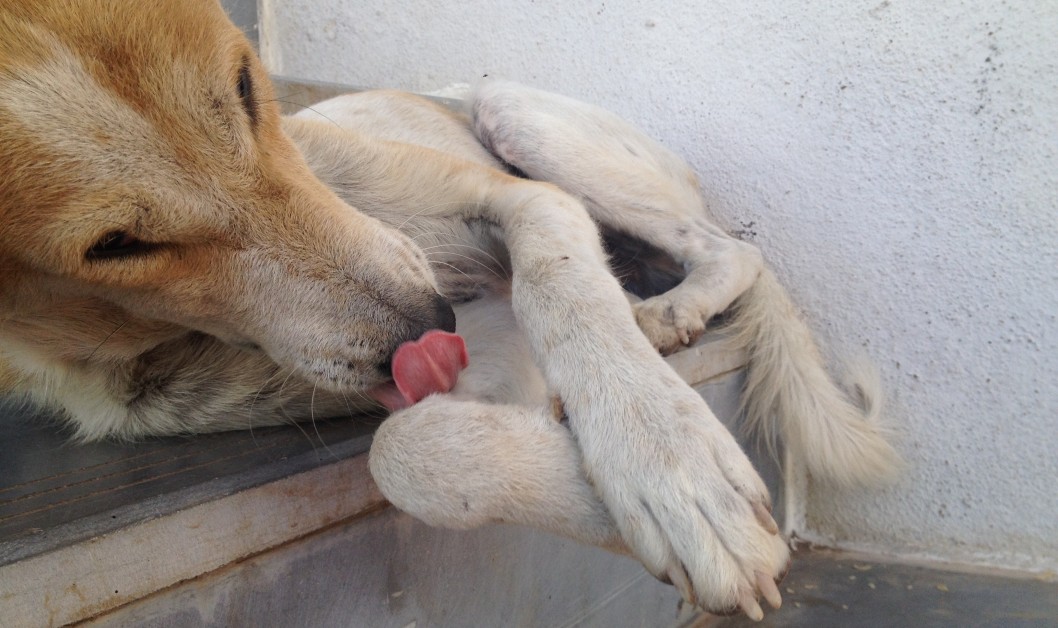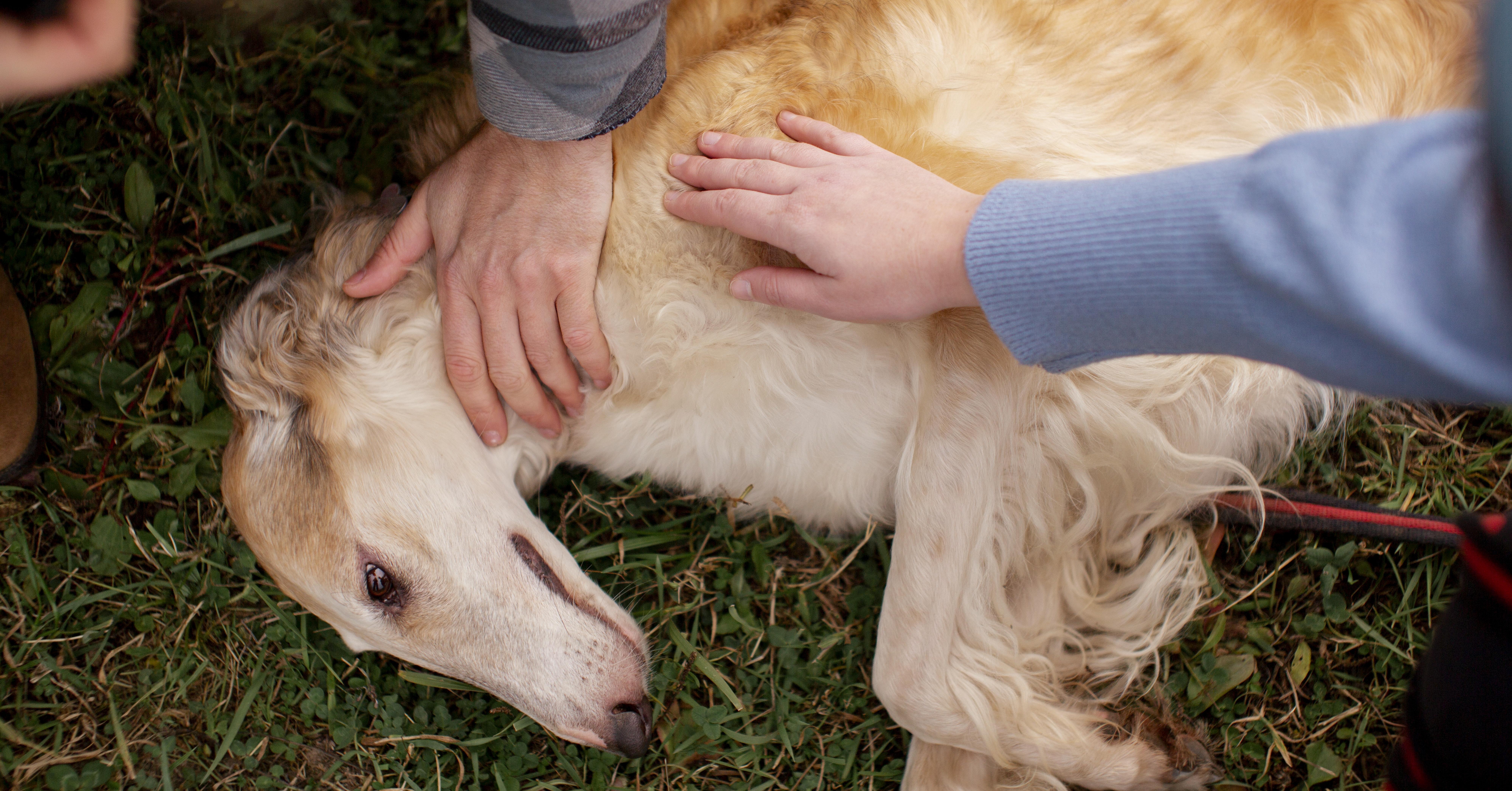Protect Your Pup’s Feet from Snow and Ice with Dog Boots
Use dog boots to protect your pup’s feet from injuries caused by snow and ice.

Snow and ice can be tough on sensitive dog paws. Extended exposure to the elements can increase your pup’s risk of frostbite. In addition, jagged pieces of ice can cause scratches and other injuries on the paws and in between the paw pads. There are also other cold weather concerns to consider, such as snowmelt which can cause irritation and even burns on your pet’s feet.
While it’s best to minimize your dog’s exposure to snow and ice, there are times when your pup will need to venture outdoors in the winter. To protect your pup’s feet from snow and ice, invest in a quality pair of dog boots.
What are Dog Boots?
Dog boots can be compared to human shoes. They are designed to protect your pup’s paws on various surfaces, such as hot pavement and snowy sidewalks. Dog booties don’t just keep your pet’s feet protected from dangers like snow and ice but can also provide warmth in cold weather conditions.
Here’s a look at some of the key benefits of investing in dog boots for your pup:
- Injury Prevention: The biggest advantage of dog boots for the winter is injury prevention. Sharp ice shards and hard snow can cause painful injuries to the bottom of the feet when your dog walks. Dog boots provide a tough barrier to reduce the risk of injury.
- Help with Mobility: Many dogs struggle to walk on snow and ice, especially in slippery conditions. Elderly dogs are especially vulnerable to falls when walking outdoors in the winter. Dog boots, especially those with non-slip soles, can give your dog the stability and traction they need to walk.
- Less Grooming: Another major perk of dog boots is that they help keep your pup’s feet clean. Dogs that spend time outdoors in the snow and mud can collect dirt between their paw pads and nails. Wearing dog boots helps keep your pet’s feet free of snow, mud, and dirt.
- Protection from Chemicals: During the winter season, many people sprinkle snowmelt on driveways, sidewalks, and roadways to prevent ice accumulation. Unfortunately, many types of snowmelt contain chemicals that can cause irritation or burns. Snow booties can prevent these types of injuries.
Choosing Dog Boots
Choosing the right pair of booties for your dog is just as important as selecting your own shoes. Start by measuring your pup’s feet. Ill-fitting shoes can be uncomfortable and make it difficult for your pet to walk.
Next, consider what type of terrain your pet will be walking on, whether it is deep snow, compacted snow, or even ice. Some boots fit further up the leg to provide more warmth and protection in deeper snow.
The materials in which the boots are made should also be a key factor in your decision. For snow and ice, waterproof dog boots are a must. These boots often contain rubber soles that provide extra protection from cold weather and sharp objects on the ground. Also, look for slip-resistant dog boots that have a textured sole that will provide extra grip on slippery surfaces.
Dog boots should always be made of breathable material. Breathable materials help keep paws cool in the summer and warm in the winter. Consider a material that can be easily wiped down or thrown in the washer, especially if your dog is prone to getting muddy outdoors.
Another important aspect to consider when choosing dog boots is safety. If you and your pet enjoy walking in the later evening hours, a pair of reflective dog booties can help ensure that your dog is seen by passersby.
Other Tips to Protect Dog Paws
While dog boots are an excellent way to keep your puppy's paws safe from snow and ice, you’ll want to consider other tips for protecting your pet’s paws in winter.
- Apply Paw Balm: There are many types of dog paw balms on the market designed to create a protective barrier between your pet’s feet and the elements. Just apply a layer of balm to the paw pads and in between the toes before heading outdoors.
- Wipe Your Pet’s Paws: When your pet comes inside, he may have chemicals, balls of ice, and other things on his paws that shouldn’t be there. Take a few moments to gently rinse your pet’s paws in warm water and dry them with a clean towel. If your pet’s paws appear irritated, apply a soothing balm to the paw pads.
- Engage in Regular Grooming: How often you groom your pet can make a big difference in how well their paws are protected. Regularly trim their toenails to give your pet more traction and prevent nail injuries. If your dog has long fur, trim the fur between the toes to prevent snow and ice buildup.
Caring for Your Pet’s Paws this Winter
Winter weather can be brutal on sensitive pet paws. Fortunately, there are ways you can protect your pup’s feet from potential hazards like snow and ice. Dog boots are a safe and affordable solution for dogs that spend time outdoors in cold weather. Taking these few extra steps to protect your pet’s paws can keep your pup comfortable while taking winter walks or enjoying outdoor activities.
Ready to start saving money on pet wellness care?
Then take a look at Mint Wellness, the pet wellness plan that provides fast reimbursement on routine pet care. Save on vaccinations, wellness exams, preventatives, dental, and more!
Learn More


